I knew from prior experience that Chris’ young dogs were a bit shy and skittish, but really cute. So I slung dSLRs with EF 85mm f/1.4L IS and 24-70mm f/2.8 lenses over my shoulders, and we walked over for a visit.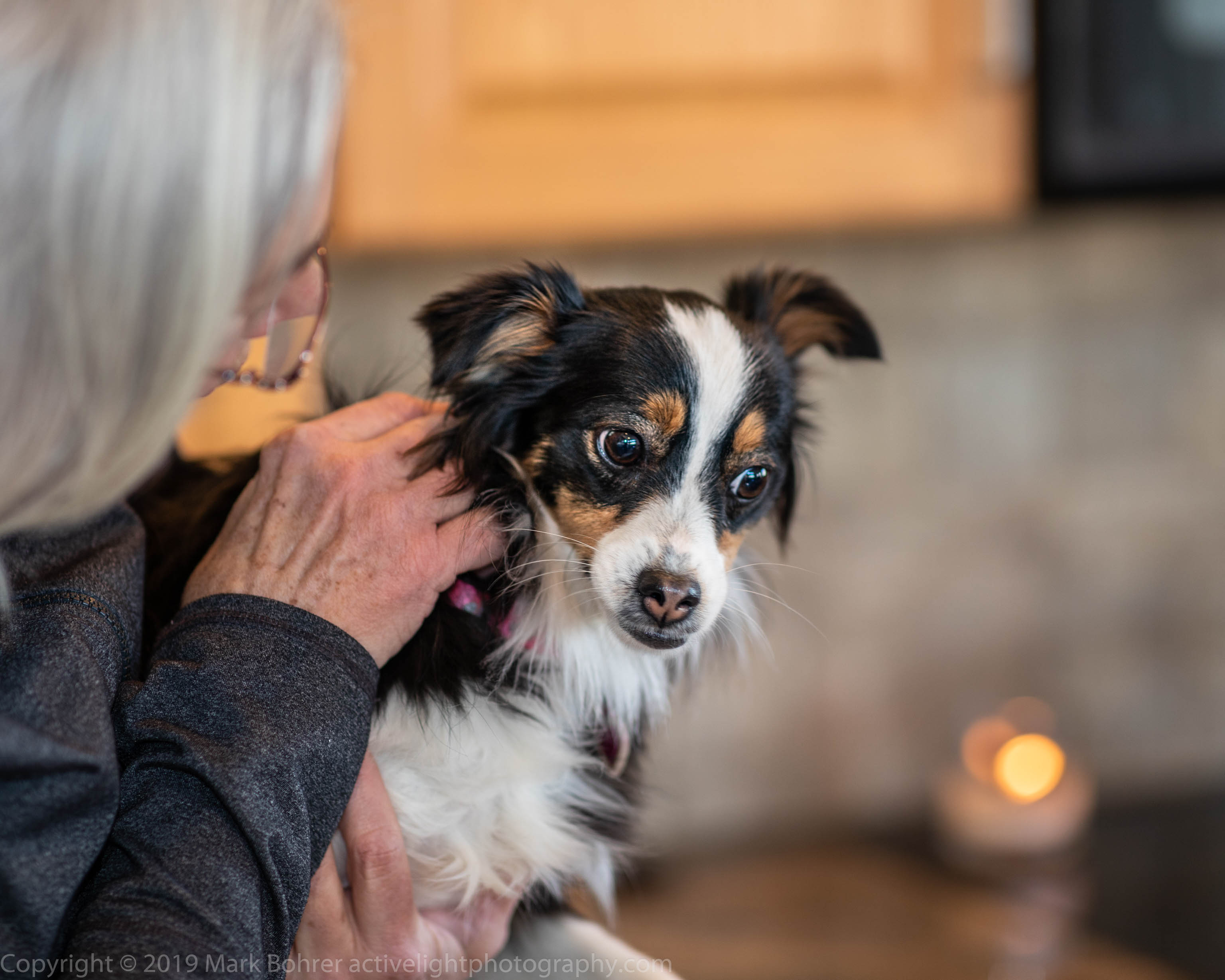 Chris with Roo – with flash fill As we sat and talked, Chris petted and played with both Aussie Leia and mini Aussie cross Roo. It was clear both dogs loved and trusted her, but they were unsure about me. I kept my distance, and used the 85mm lens to capture whatever Roo and Leia offered me. The dogs were the story, so I kept humans out of it except as supporting players. 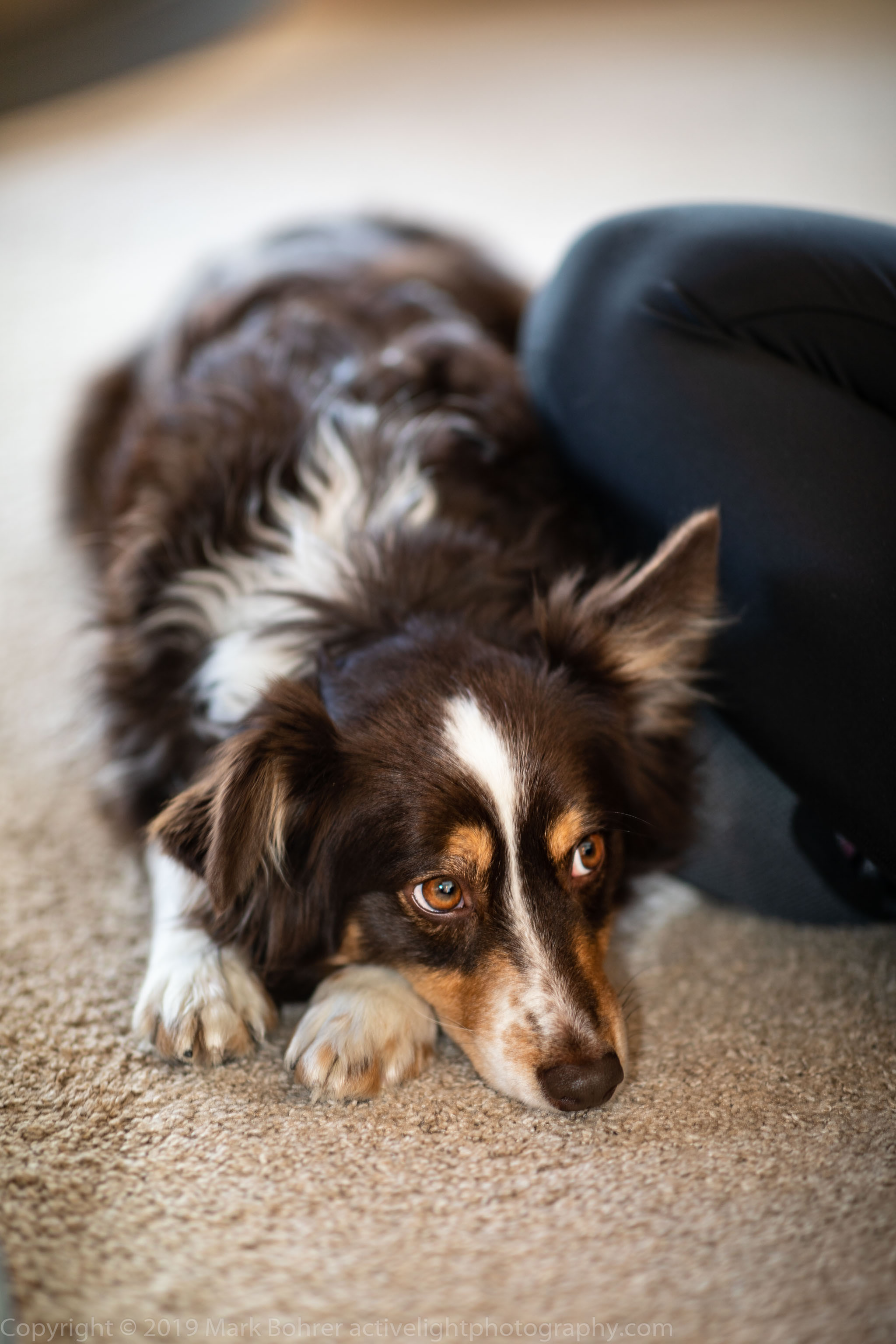 Princess Leia – with flash fill Act Naturally That’s how I shoot pups. I’m looking for their natural behavior in their normal environment. Sometimes I will create a set with background and light it for a different look. But I’m after them doing their favorite things, whether that’s chasing another dog, pulling a cart, running around a show ring, or smiling at their owner. **Pup Photo Session Offer** Live in the Albuquerque area with your pup? For a limited time, get a 30 minute pup photo session at your home for 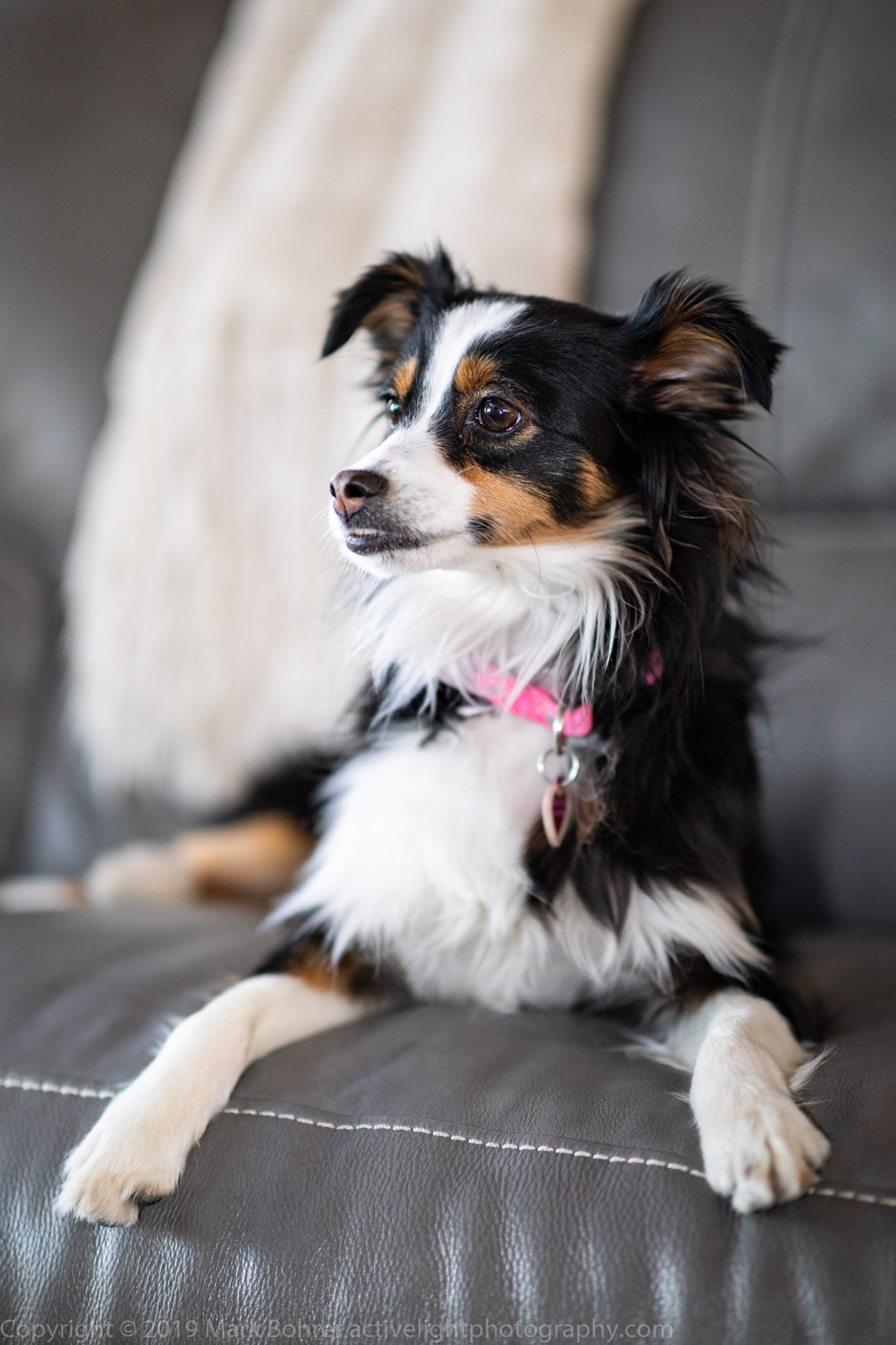 Regal Roo – portrait with flash and window light 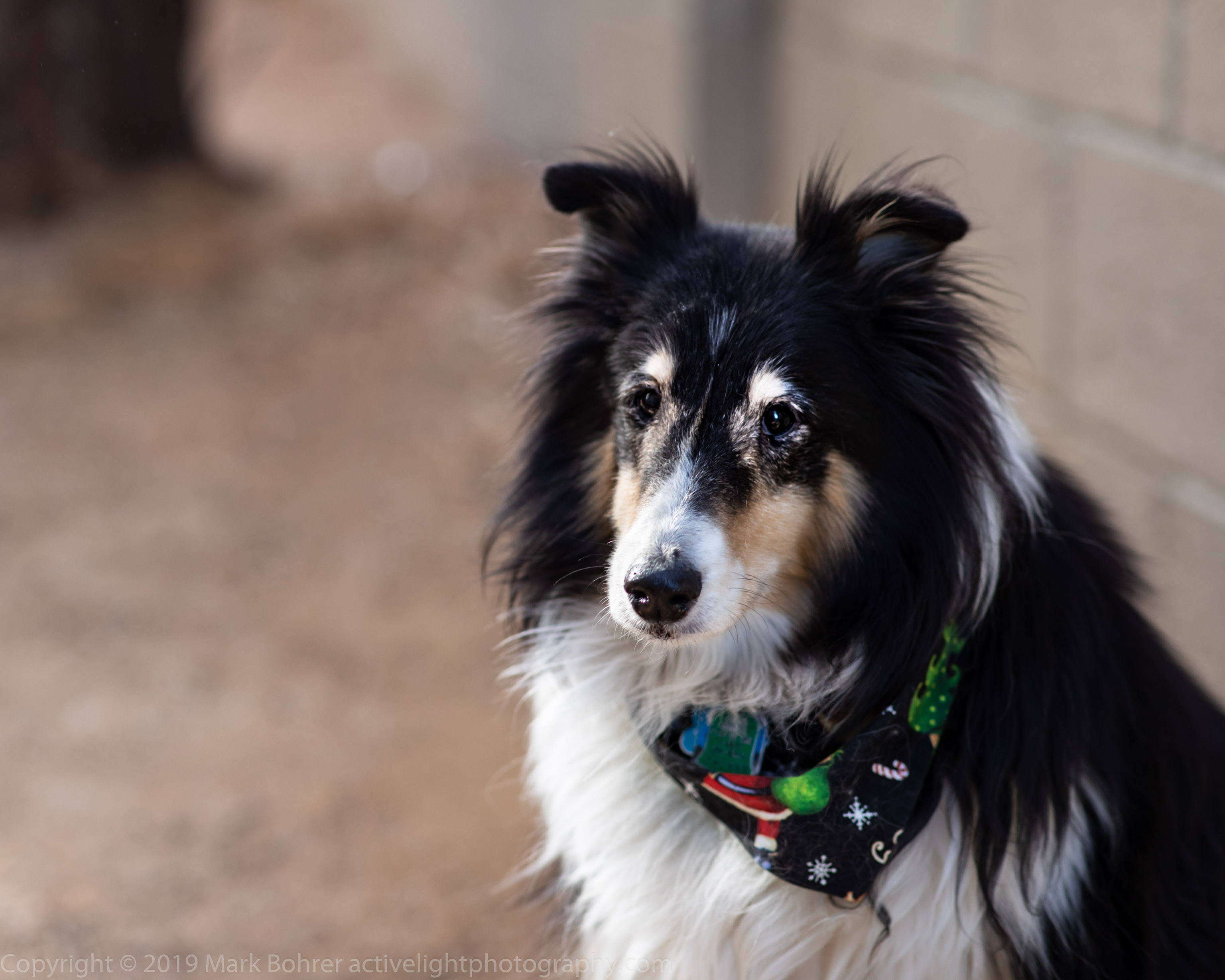 Buzz – elder statesman My Sheltie Buzz is 13 now, and sleeps more than he used to. He’ll sit still (or lie still) long enough for me to manually focus and shoot. He’s also trained well enough that I can sit him down in one well-lit spot and he’ll stay there while I photograph him. 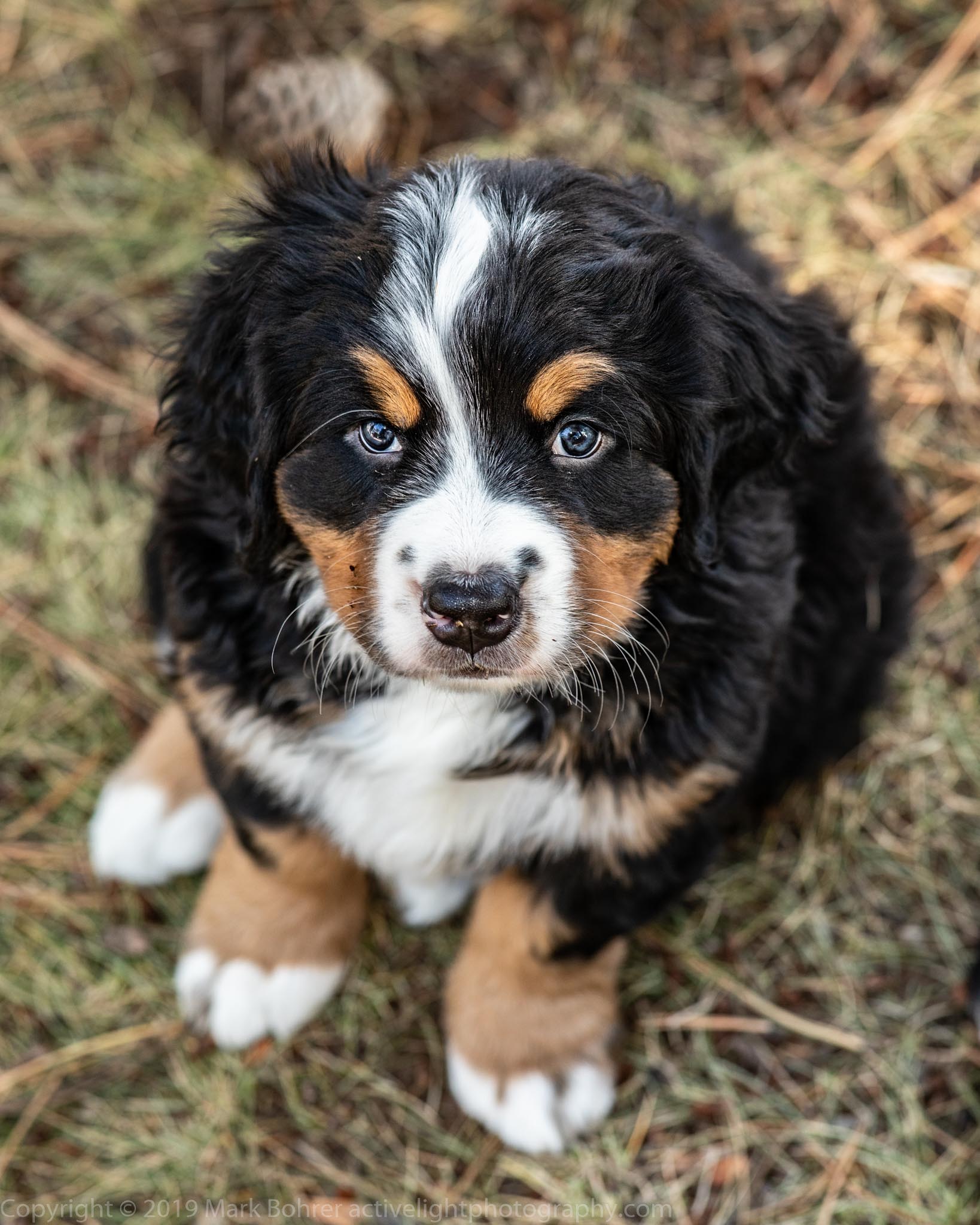 Berner pup actually holding still for a nanosecond – with flash fill in shade outdoors Puppies Are Different On the other hand, there are puppies. Bernese Mountain Dog pups can be a handful, skittering around the room, chasing after Mom for a meal or untying your shoelaces. It’s like shooting sports – I need autofocus lenses and fast shutter speeds to capture the action. Confinement in a puppy pen or just a living room keeps pups from roaming too far. Then I let the games begin, and shoot them chasing and tumbling over each other, playing with toys, and finally sleeping when they get comfortable with me and tire out. 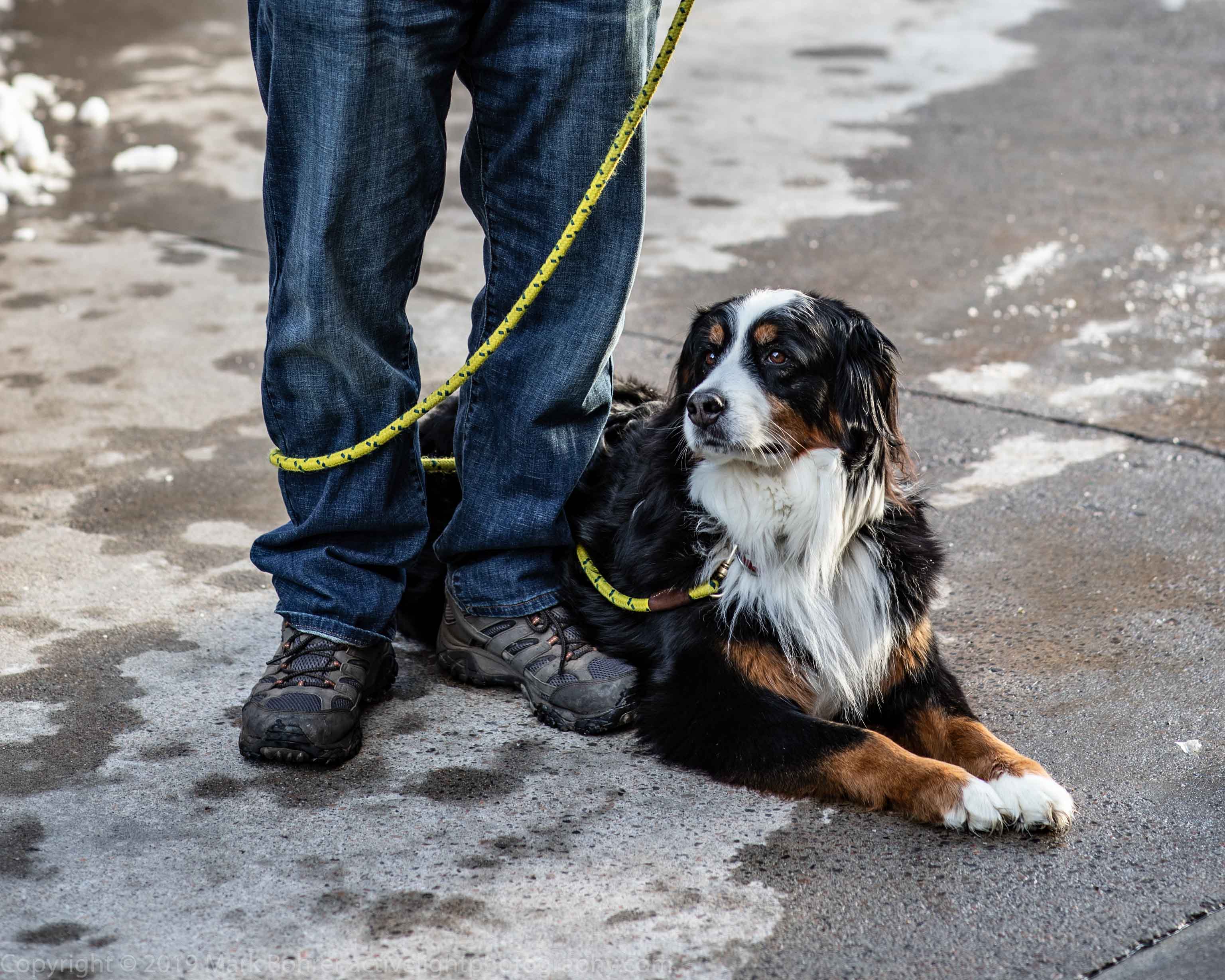 Waiting for the parade in Breckenridge, Colorado Outside Events But my favorite shots come from outdoor action. For a holiday dog parade or other event, I arrive early to capture the whole story. Dogs will be milling around with their people, getting hitched to carts or costumed and waiting while owners exercise thumbs on cell phones. Sometimes a couple dogs won’t get along, and loudly tell everybody about it while curling a lip and showing teeth. But most owners are smart and responsible enough to move dogs apart, and everyone calms down. Pre-parade action is easy to shoot – everyone’s in one place, not moving too much and focused on themselves. Once the parade begins, it’s a different story. I find myself walking alongside while rubbernecking to see doggie costumes or unusual breeds or action. Operating solo, I know I can’t capture everything – I pick a few individual pups and owners. Spectators and storefronts are part of the story, so I include those too. 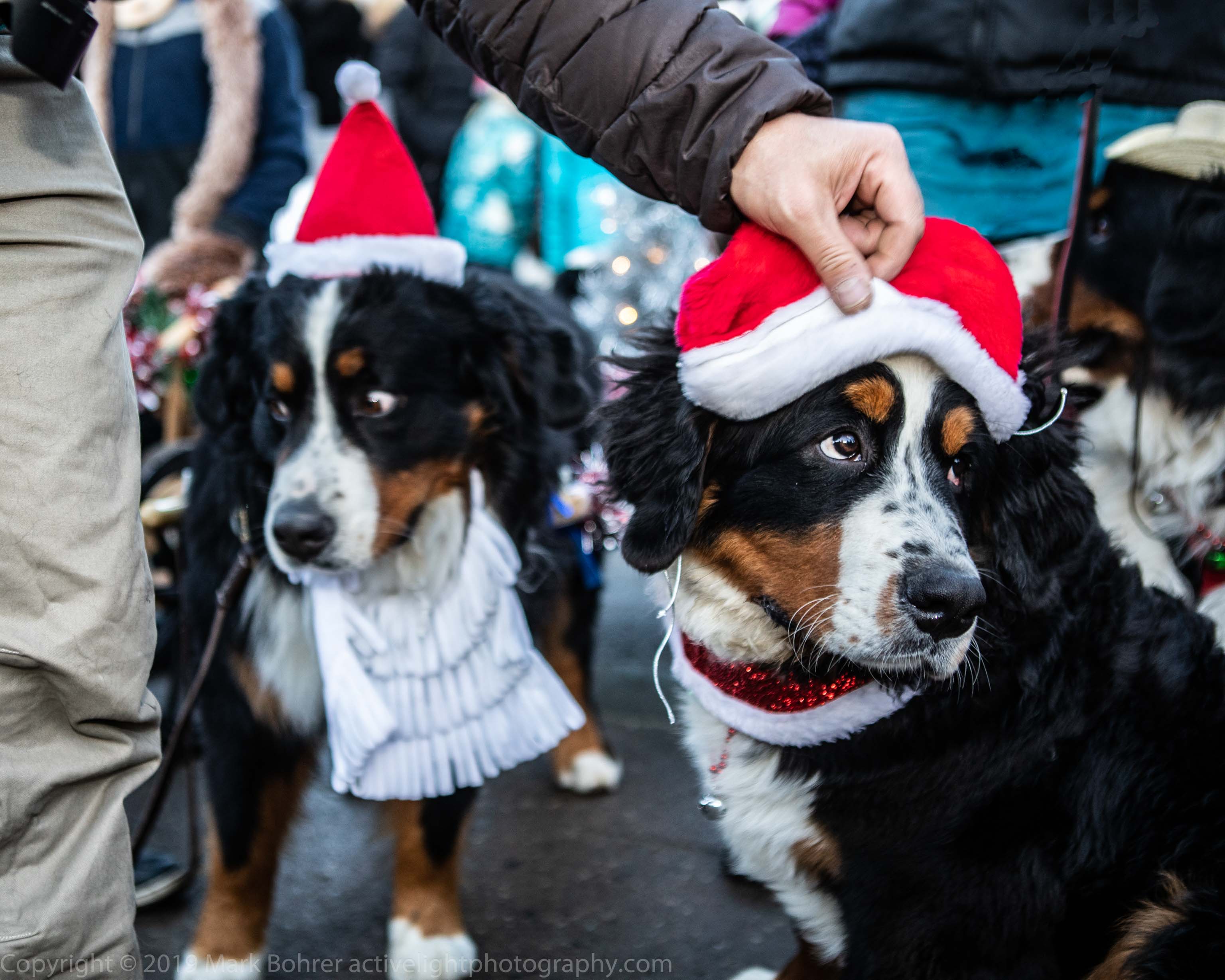 Relaxing after the parade More great shots come at the end of the parade route, when everyone stops and mills around again. Now the pressure’s off, and dogs can hang out looking cute while their owners take pictures and talk with each other about – what else? – dogs. Owners will pose dogs for you if you ask, or see you’re shooting and get their dogs and themselves to look your way. I usually capture the pup and a few shots of pups with owners. The shots with owners usually look more posed than I like – it’s almost impossible to catch both owner and dog looking natural. 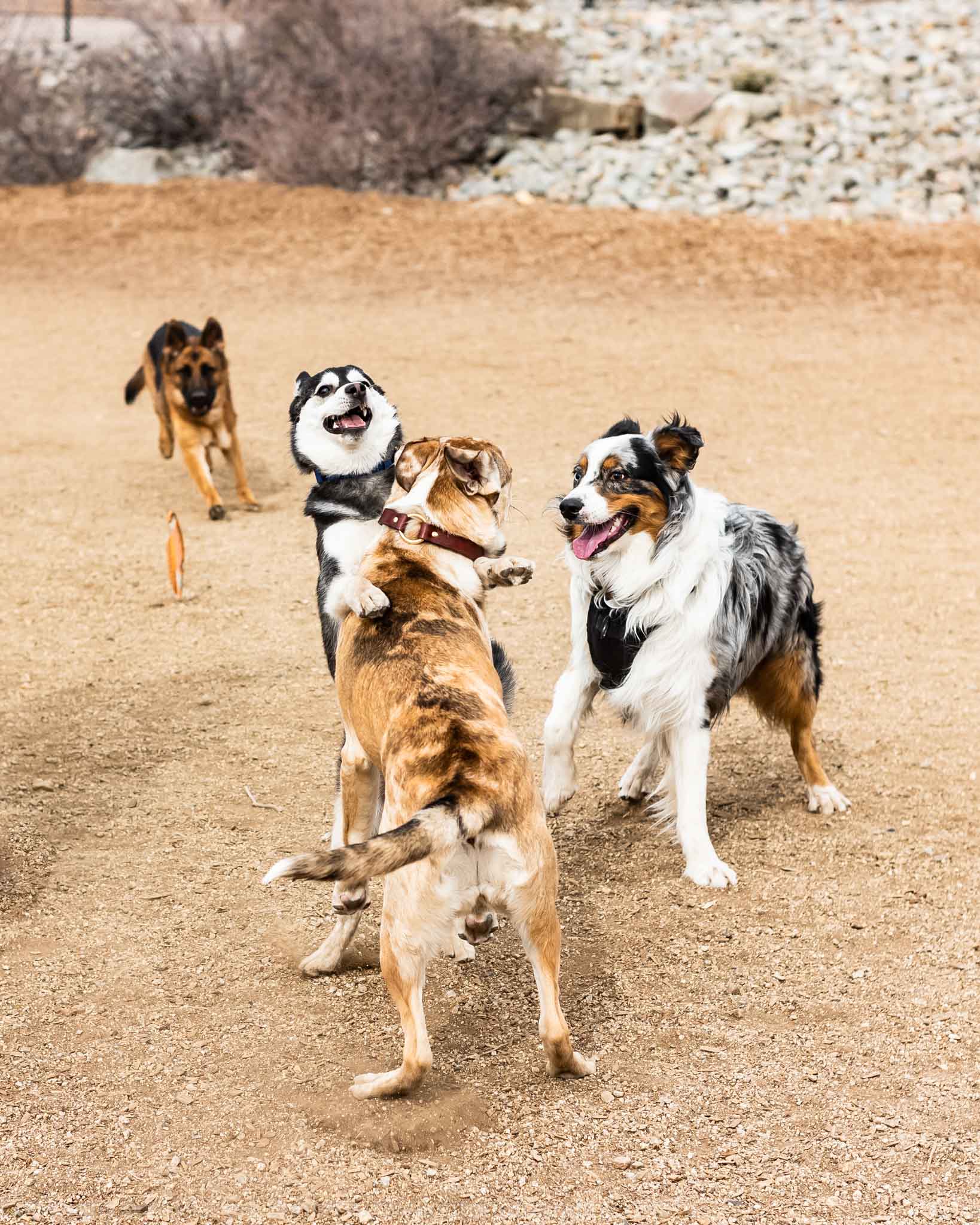 Dog park action Go To The Park The dog park is another great spot for action. You can pick weather and time of day, but the dogs are pot luck. One overcast winter day gave me an active bunch, including puppies and young adults enthusiastically chasing each other. I used a 50mm f/1.4 manual-focus lens and lightweight camera, and either prefocused to a spot the action was going to and waited, or photographed dogs pausing for a skritch. I use single-shot mode with a moderate lens aperture between f/2.8 and f/5.6, and pick my moments. I can usually capture pictures with a pup’s eyes prominently featured, and this may also give me a great expression. 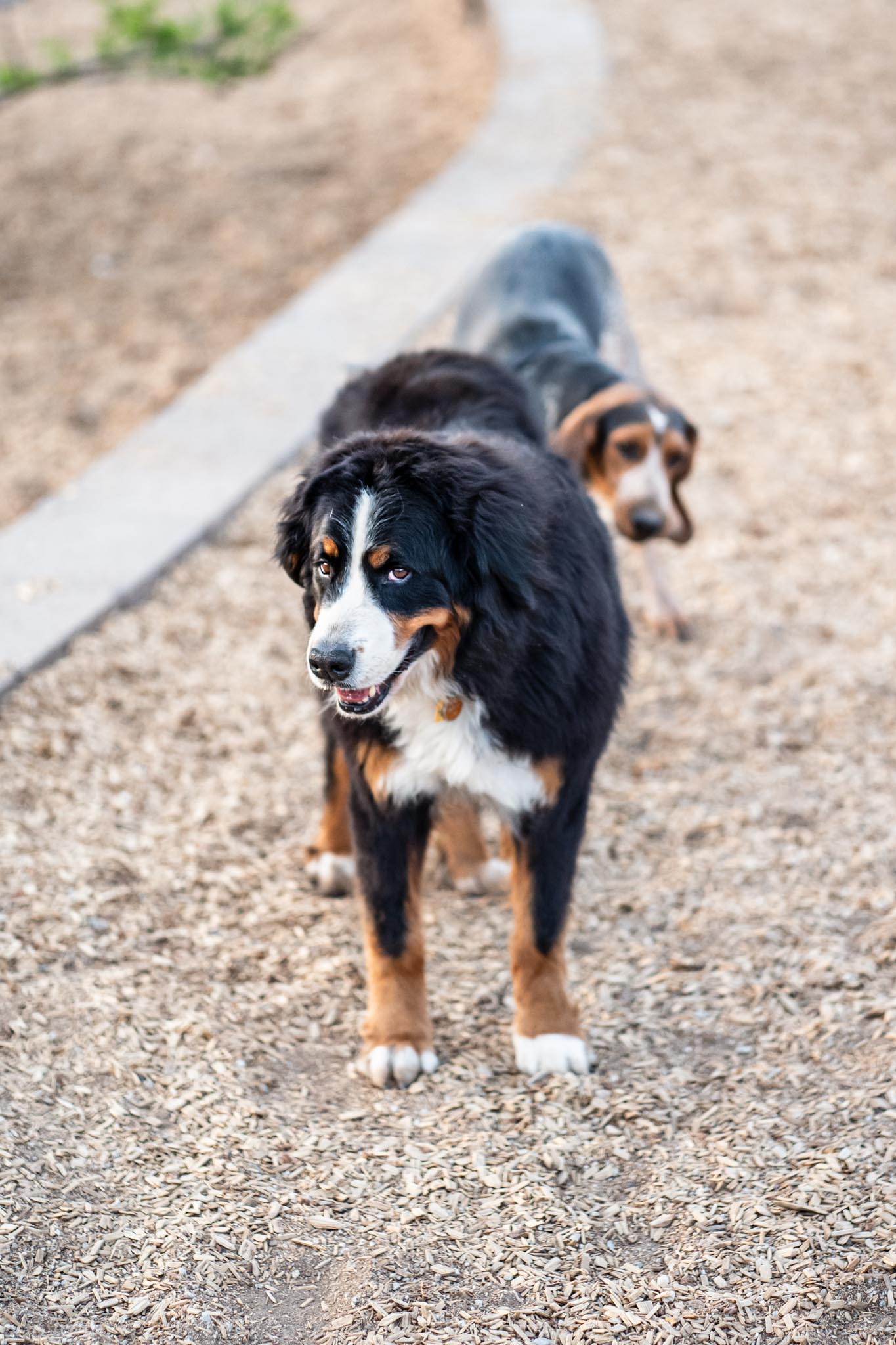 Daisy at 75mm Autofocus vs Manual Autofocus lenses will give me well-focused and composed shots around 80% of the time. With manual focus gear, my keeper rate is around 30-40%. So why use manual focus gear at all? Leica lenses give me a sharp, contrasty rendering like nothing else. Those lenses also beautifully isolate subjects with butter-smooth out-of focus backgrounds at f/2 or f/1.4. I love that look, especially from Leica’s 24mm f/1.4 Summilux-M ASPH, 35mm f/2 Summicron-M ASPH, and 75mm f/2 APO-Summicron-M ASPH. Some of Leica’s older lenses are great for a softer rendering, and can be less expensive than the newer models. Three of my favorites are a 50mm f/2 Summitar from 1949, 1965 50mm f/1.4 Summilux, and a 1959 90mm f/2 Summicron. But a high energy subject demands autofocus gear. I use the best AF lenses I can afford, with 24mm, 50mm and 85mm Canon EF-mount primes being my weapons of choice. Growing up, I inherited 50mm and 135mm lenses and a Leica M3. Both those lenses demanded picking out a piece of the action. While I still compose shots that way today, wide-angles used close have become another favorite choice. And yes, a 24-70mm f/2.8 zoom can be good in a pinch, but… Though newer zooms are better corrected, no zoom’s image quality measures up to a good prime (single focal length) lens. 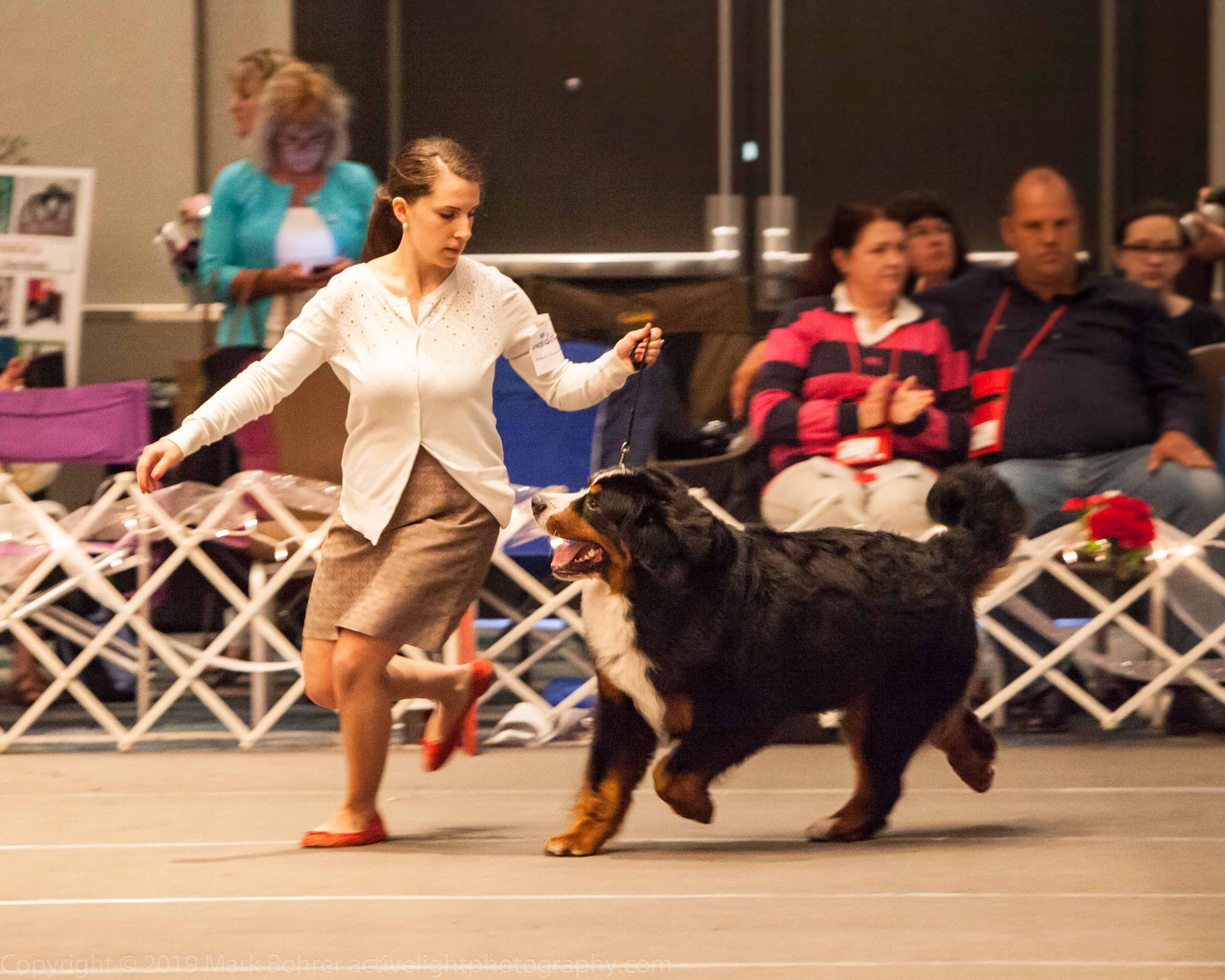 Around the ring at the BMDCA National Specialty 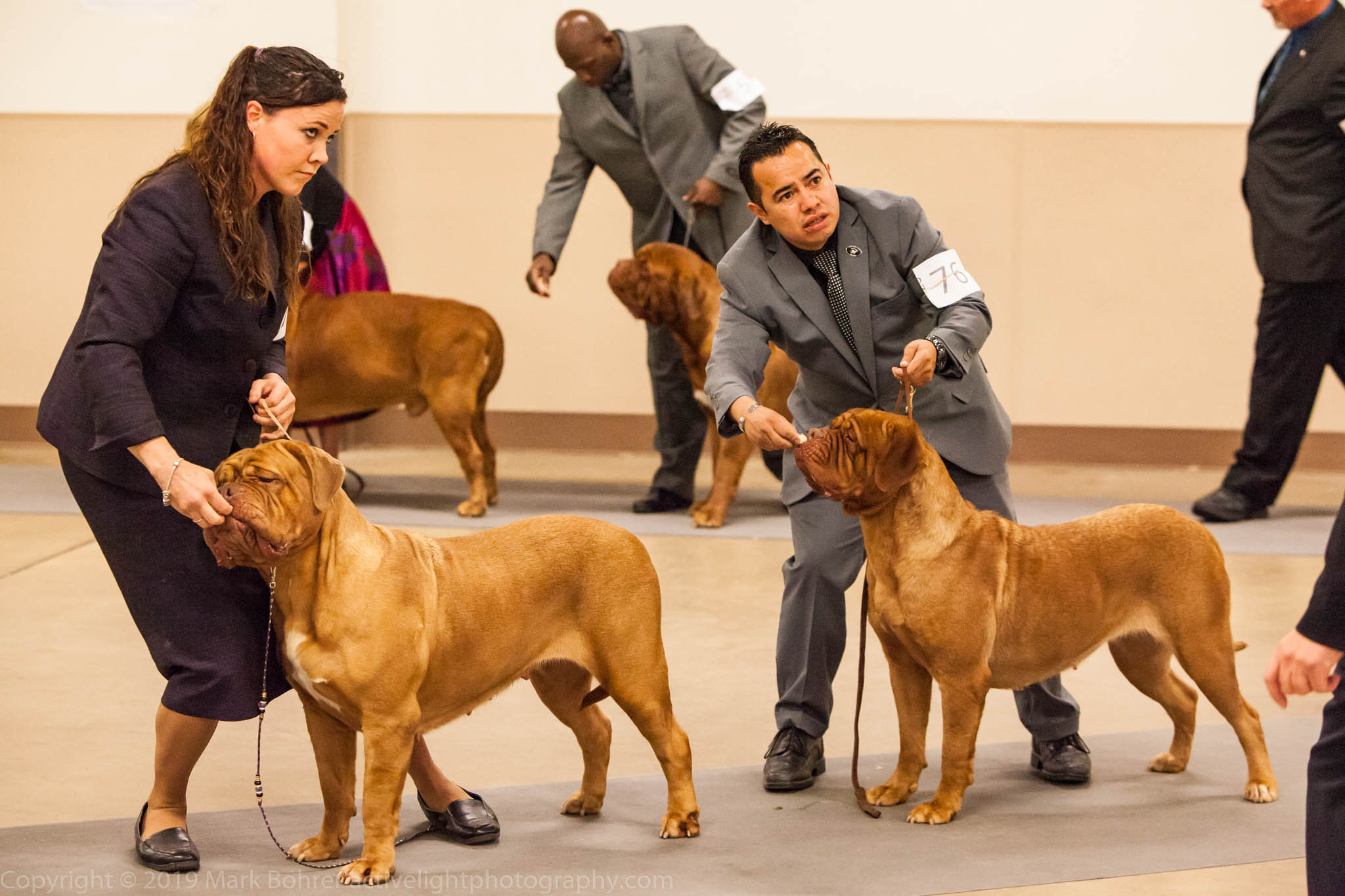 Waiting for the judges Shoot the Show! Especially right now, dog shows are a biggie. Westminster and national specialty shows for each breed happen every year, with regional competitions throughout the year. Judges, dogs and handlers are the only ones allowed in the show ring, so you’ll find yourself using a long lens from the sidelines. Any 70-200mm f/2.8 will work, but a prime like a 135mm f/2 or 135mm f/1.8 will give better results and is one to one and a half stops faster. That gives you faster shutter speeds in low light. The light is usually terrible for dog show events inside, so you’ll need those faster speeds to freeze the action. You’ll also be shooting at ISO 6400 or higher to get there. Newer cameras give less noisy results – comparing a 2007 EOS 5D mk II to a 2017 EOS 5D mk IV, the mk IV is clearly less noisy at 6400. That said, best bets are competitors doing last minute brushing and getting treats ready for their dogs. They’re not moving much, unlike when they’re parading around the ring, so you may get away with lower ISOs and slower shutter speeds. 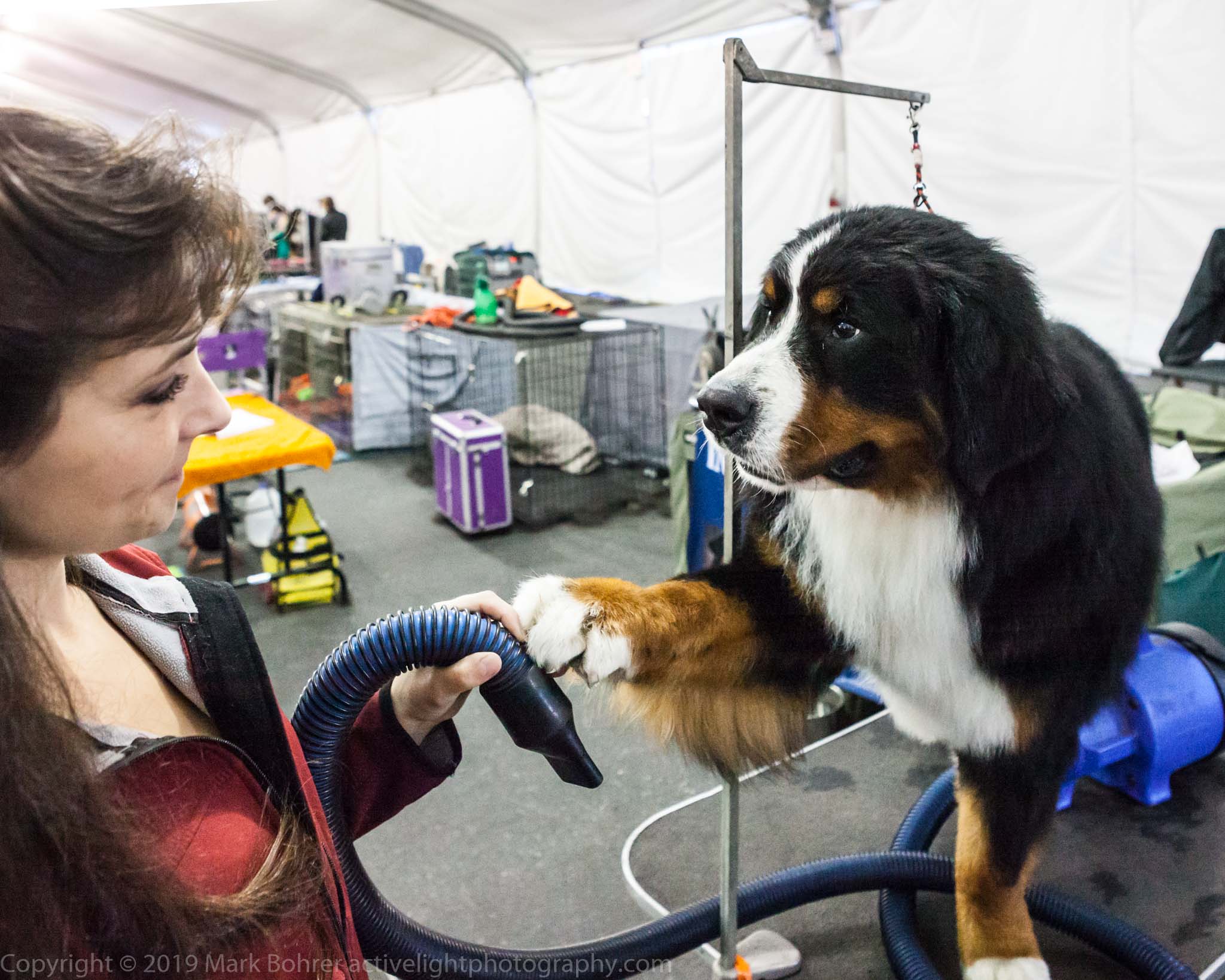 In the grooming tent, BMDCA National Specialty You’ll get closeups in the grooming tent. Here’s where owners and handlers have grooming tables, bow dryers, and other grooming tools set up to prep their dogs. Most will be happy to have you photograph them. Just stay out of their way as much as possible while you shoot and talk to them. To Flash or not to Flash… On-camera flash can work as a fill light when there’s window light inside or in the shade outside. You’ll highlight whatever you’re aiming at from its background. But in low light or as a primary light source, on-camera flash will give you disgustingly-harsh shadows you can’t soften in Lightroom or Photoshop afterwards. You can ged rid of background shadows if you’re far enough away from any walls, but you still may be left with harsh nose / muzzle shadows on subjects. When it’s dark, your best bet is a Lumiquest pocket bouncer or similar on-flash diffuser to soften the light a little. You can also try bouncing flash off the ceiling if it’s low enough. Some dogs will be absolutely terrified of the whole experience, especially flash. So ask the owner if flash is OK, or use your best judgement after observing the dog for awhile. 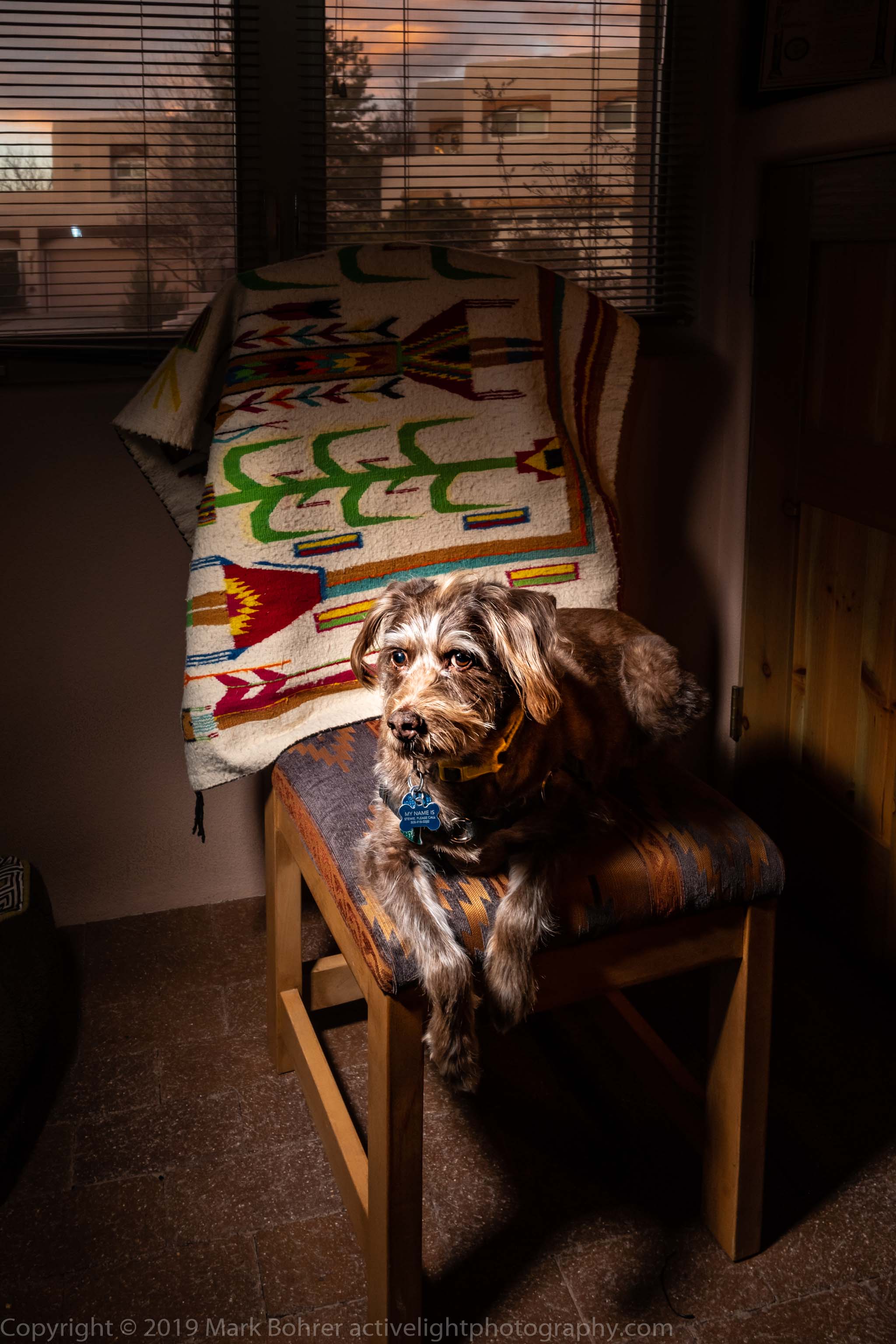 Stewie’s book jacket photo – with Elinchrom ELB 400 HS studio strobe and 20 degree grid spot Shot Notes My dSLRs of choice are Canon models – EOS 5D mk IV with EOS5D mk II as a second camera / backup. I use 430EX III-RT flash on-camera with the white bare-bulb diffuser that came with it, aimed up at the ceiling. That will give me some ceiling fill plus direct main light without too-obnoxious shadows. My favorite lens for pup action shots is Canon’s EF 85mm f/1.4L IS. I get a combination of longer working distance, super image quality, image-stabilized shooting (important for hand-held shots indoors), and subject isolation at f/1.4 or f/2. 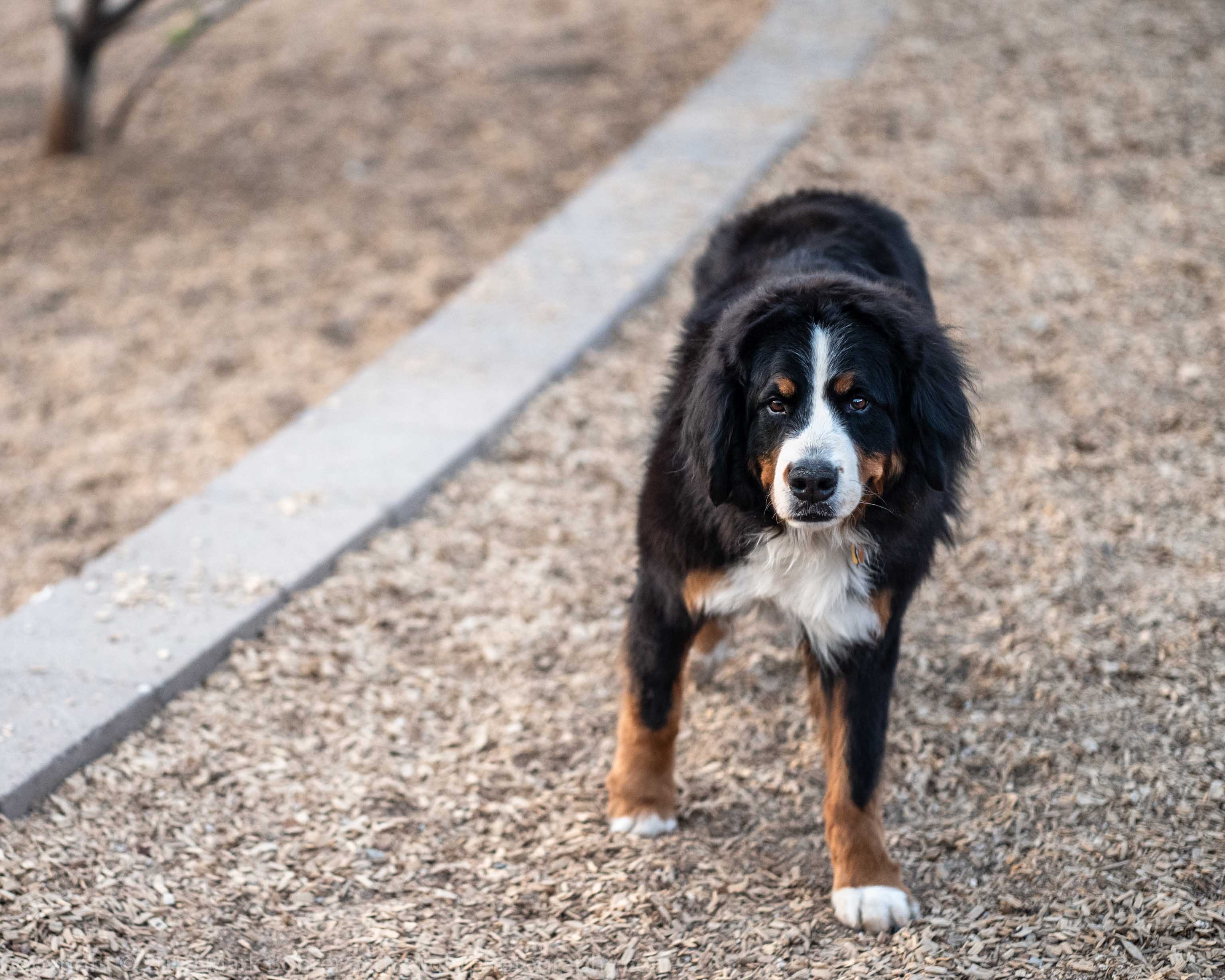 Daisy at the dog park With a slow-moving subject, I can get away with a Leica SL and M10 cameras with 24mm f/1.4 Summilux-M ASPH, 75mm f/2 APO-Summicron-M ASPH or one of my 50mm lenses. My usual method is to put the wide lens on one camera and the longer 75mm or 85mm on the other, and wear both cameras. That way, I’m ready for just about anything. 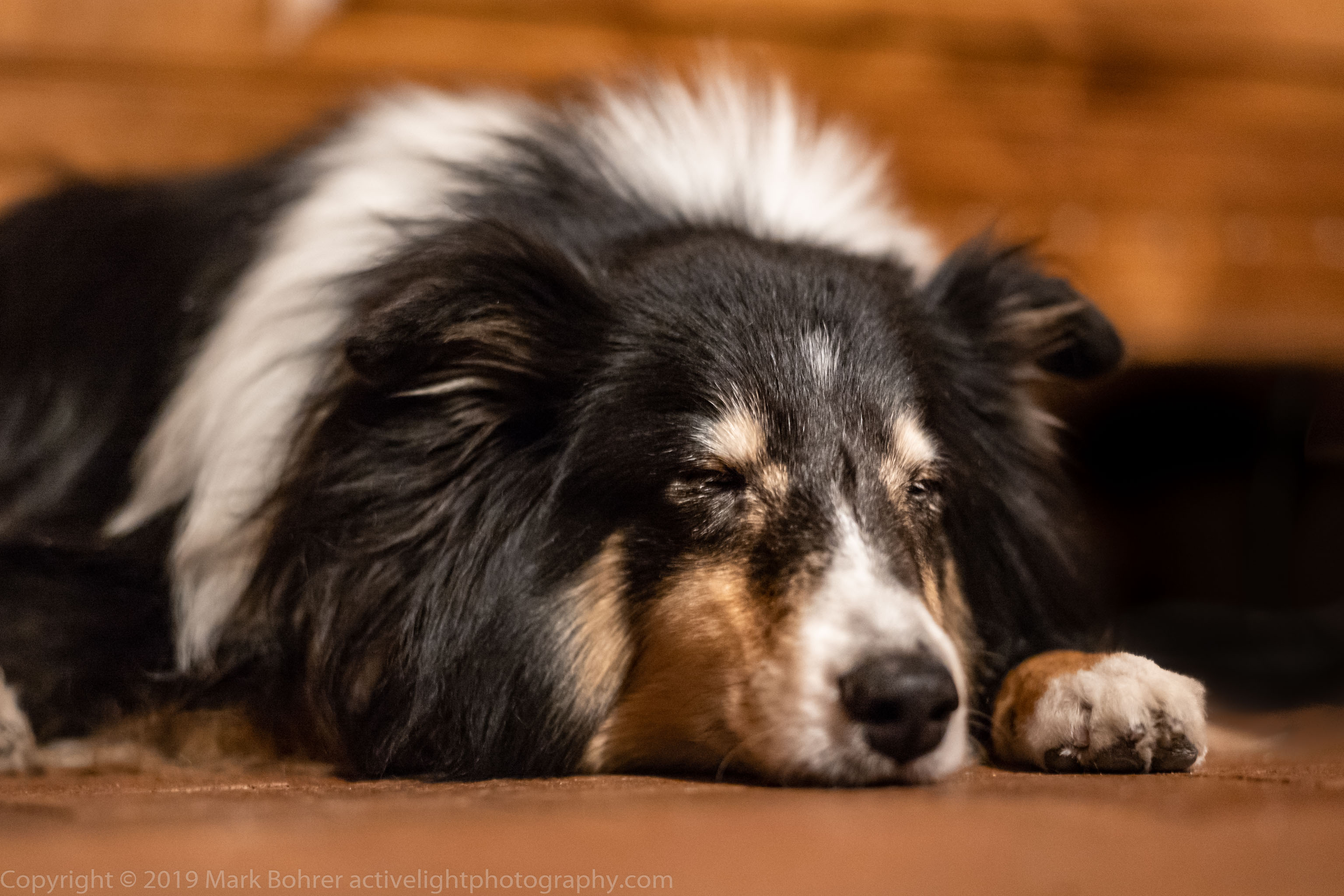 Buzz snoozing – with 50mm f/2 Summitar from 1949 |
(408) 483-3782
Curious about how to shoot ruins?(408) 483-3782

Recent Comments